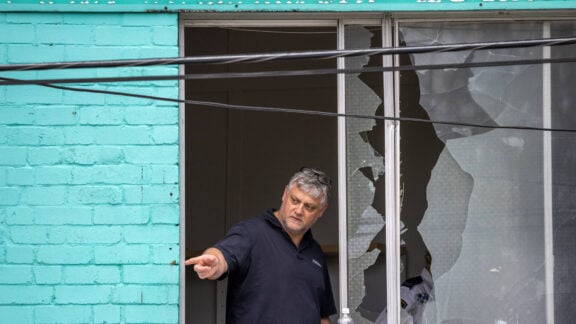When a massive sinkhole first appeared in Daisetta in May 2008, some residents had feared it might engulf their small Southeast Texas town.
But after growing to 274 m across and 79 m deep, it stabilised, swallowing up some oil tanks and several vehicles but sparing nearby homes.
“We just learned how to live with it,” says Krystal Parrish, one of the around 1,000 people who live in the town, about 97 km northeast of Houston.
But earlier this month, city officials announced the sinkhole had expanded after a long hibernation.
Officials say there hasn’t been any significant expansion since the new growth was detected on 2 April, but they’re monitoring the sinkhole and keeping the public informed.
“I don’t think (residents) should panic or anything. But it’s something that they should watch,” said Richard Howe, a private geologist with Houston-based Terra Cognita who’s helping Daisetta officials monitor the sinkhole.
Daisetta sits on a salt dome, a natural formation created below the ground over millions of years where oil brine and natural gas accumulate.
Salt domes create good conditions where oil can migrate and accumulate, Howe said. This was the reason Daisetta became a booming oil town in the early 1900s. The sustained oil drilling along the salt dome over decades could have contributed to creating the sinkhole, Howe said. Investigators had also considered saltwater waste that was being stored underground by an oil and gas waste business next to the sinkhole as a possible cause.
But Howe said a cause for the 2008 sinkhole was never determined. A more comprehensive study could be done, but it would be costly and “a small town like this is not flush with cash,” he said. Howe, who also helped Daisetta in 2008, is working for the city on a volunteer basis.
Sinkholes tend to be common in regions where soluble rocks, including salt domes and limestone, can be dissolved by groundwater, according to the US Geological Survey.
Howe said officials have placed steel posts 15 m apart in a pasture area near the sinkhole to monitor any changes in their elevation and to act “as an early warning if this thing continues to move south toward homes and buildings.”
Officials with the US Environmental Protection Agency and the Texas Commission on Environmental Quality, or TCEQ, had relocated six large tanks with an unknown substance from the cracked earth and asphalt near the sinkhole so they could be tested, the TCEQ said in an email Wednesday.
“Due to the imminent threats to human health and the environment, TCEQ and US EPA proceeded quickly to mitigate the potential for chemical releases,” TCEQ said.
After the sinkhole appeared in 2008, county commissioners asked the state to set up monitoring devices that could be an early warning system.
Daisetta City Secretary Joan Caruthers said she’s not aware if any such monitoring system from the state was ever set up.
Source: AAP








